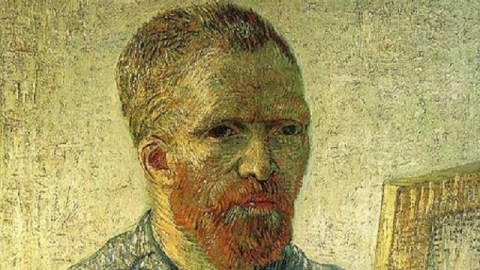Van Gogh: Less Crazy After All These Years?

No myth about art and artists abides as pervasively as that of Vincent Van Gogh, the mad genius. To mark the grand reopening of the renovated Van Gogh Museum in Amsterdam, The Netherlands, curators and conservators hope to renovate Van Gogh’s madman mythology with the exhibition Van Gogh at Work. That workmanlike title relates perfectly the show’s goal to demonstrate just how workmanlike Van Gogh was in developing and thriving as an artist. Less a portrait of a man touched by angels and demons and more a depiction of a troubled man who immersed himself in the craft of painting, Van Gogh at Work might succeed in making Vincent more normal, more relatable, and less crazy after all these years.
The exhibition leans heavily on almost 8 years of research performed by the Van Gogh Museum, its Partner in Science Shell Nederland, and the Cultural Heritage Agency of the Netherlands (RCE). In addition to 200 works of art by Van Gogh and by contemporaries such as Paul Gauguin, Georges Seurat, Claude Monet, and Emile Bernard that Van Gogh saw and drew ideas and inspiration from, microscopic images, x-rays, and paint samples allow visitors to walk in Van Gogh’s shoes as he journeyed on the path to becoming a painter. Personal effects of Van Gogh, such as his original sketchbooks, paint tubes, and Van Gogh’s only surviving palette (from the Paris’ Musée d’Orsay) serve not just as holy relics, but also as reminders that they were once his tools of the trade.
Van Gogh’s almost maniacally prolific years of painting belie the fact that he was a thoughtful craftsman. By including multiple versions of Van Gogh’s Sunflowers (from the National Gallery in London and the Van Gogh Museum) and The Bedroom (from the Art Institute of Chicago and, again, the Van Gogh Museum), Van Gogh at Work clearly shows how the artist often worked in series, making subtle changes to each version as he worked out different problems of composition and color at each stage. We often think of Monet as the sober master of series, but Van Gogh was similarly sober in his focus on a single subject studied in multiple works.
Perhaps most importantly, these close studies of Van Gogh’s works have shed new light on how he used color. As explained in this video, Van Gogh scholars have long been confused at the discrepancy between the colors in The Bedroom and the colors as described by Vincent himself in a letter to his beloved brother Theo. These scientific studies finally confirm that chemical changes to the paint over time have caused the actual appearance of the paintings to change significantly. Van Gogh belonged to one of the earliest generations of painters to use tube paint, which freed them to paint outdoors in nature but also exposed them to the deficiencies of any new, untested-by-time technologies. In the case of Van Gogh’s The Bedroom, the red pigments faded faster than other hues after long-term exposure to light, thus making the lavender described in Vincent’s letter to appear pale blue to us today. Patches of the original paint protected by the frame give a hint of what Van Gogh intended viewers to see. Van Gogh at Work features several digital recreations of paintings as Van Gogh intended, thus challenging our prejudices about Van Gogh’s color choices.
If lavender walls can turn blue and pink flowers can turn white, have we been looking at the “real” Van Gogh at all over all these years? Is it even possible to reclaim the “true” Van Gogh hidden beneath the layers and distortions of romanticism and mad genius worship that hark back to the days when the German Expressionists claimed Vincent as one of their angst-ridden own? Just as Steven Naifeh and Gregory White Smith’s modernizing, myth-busting biography Van Gogh: The Life (which I reviewed here) brought a fresh perspective on this most deceptively “familiar” of popular artists, including the idea that Van Gogh’s death was actually an accidental shooting by another and not an agonizingly botched suicide, Van Gogh at Work refreshes over-familiar (and paradoxically overlooked) masterpieces such as The Bedroom or The Sunflowers as not moments when Van Gogh caught lightning in the bottle, but rather as moments when inspiration met perspiration, when vision emerged hard won from hours of toil. Fans of Vincent embrace him for the fragile humanity they see in his art, hear in his letters, and feel from his story retold. And, yet, the overemphasis on his mental illness (which remains unchallenged, if deemphasized by Van Gogh at Work) remains a barrier between the artist and contemporaries. In showing us Van Gogh’s methods rather than his madness, Van Gogh at Work works a different kind of magic by making us experience what it felt like to work hard enough to become a genius, a Van Gogh.
[Image:Vincent Van Gogh. Self-Portrait as an Artist (detail), 1887. Image source.]
[Many thanks to the Van Gogh Museum in Amsterdam, The Netherlands, for providing press materials related to the exhibition Van Gogh at Work, which runs through January 12, 2014.]





